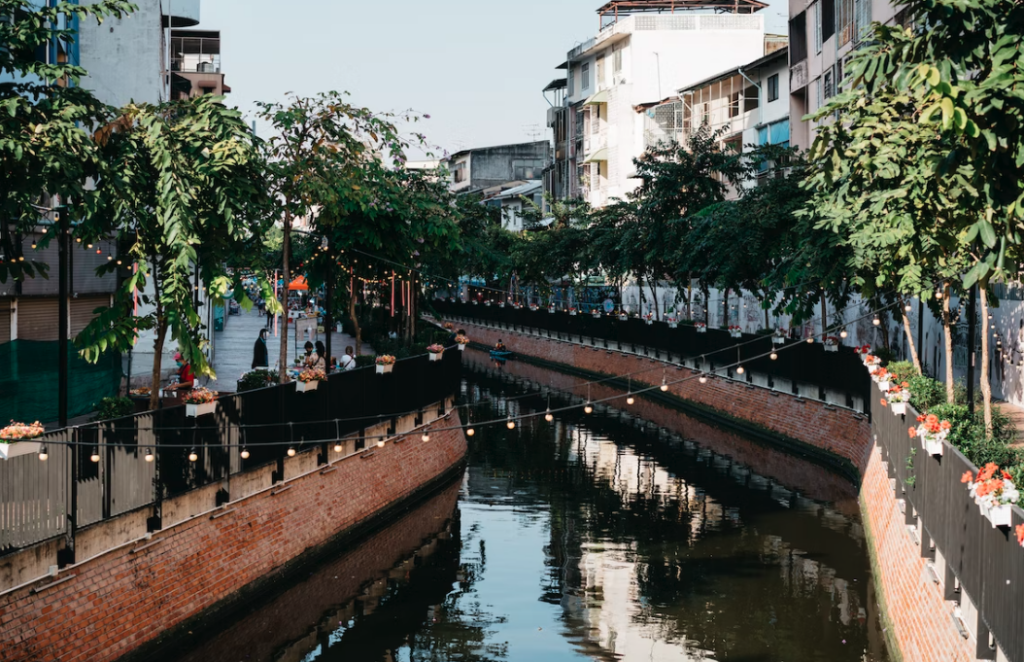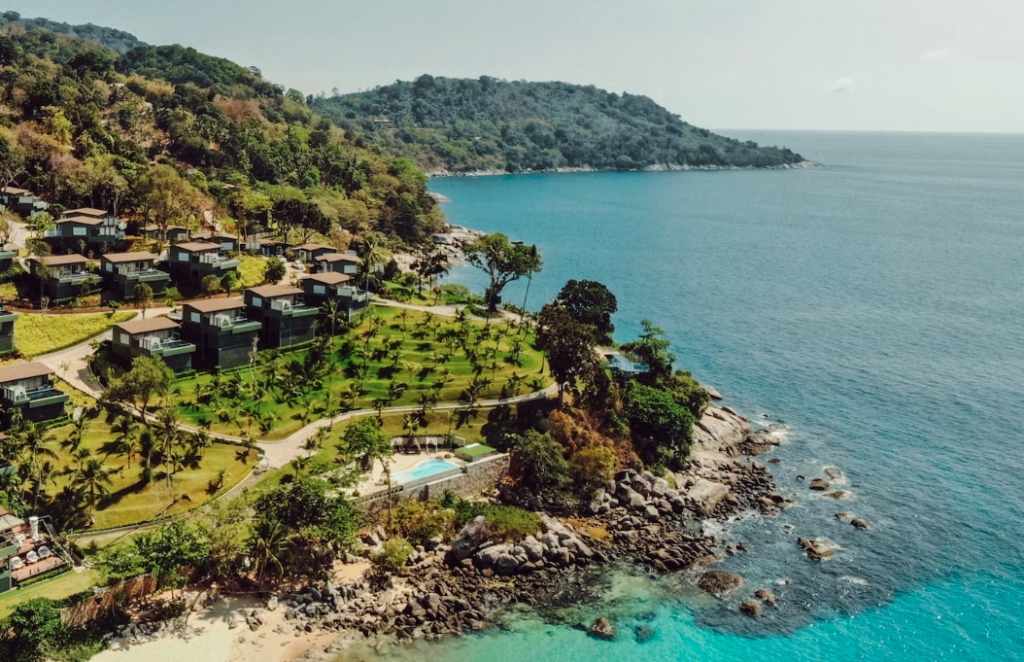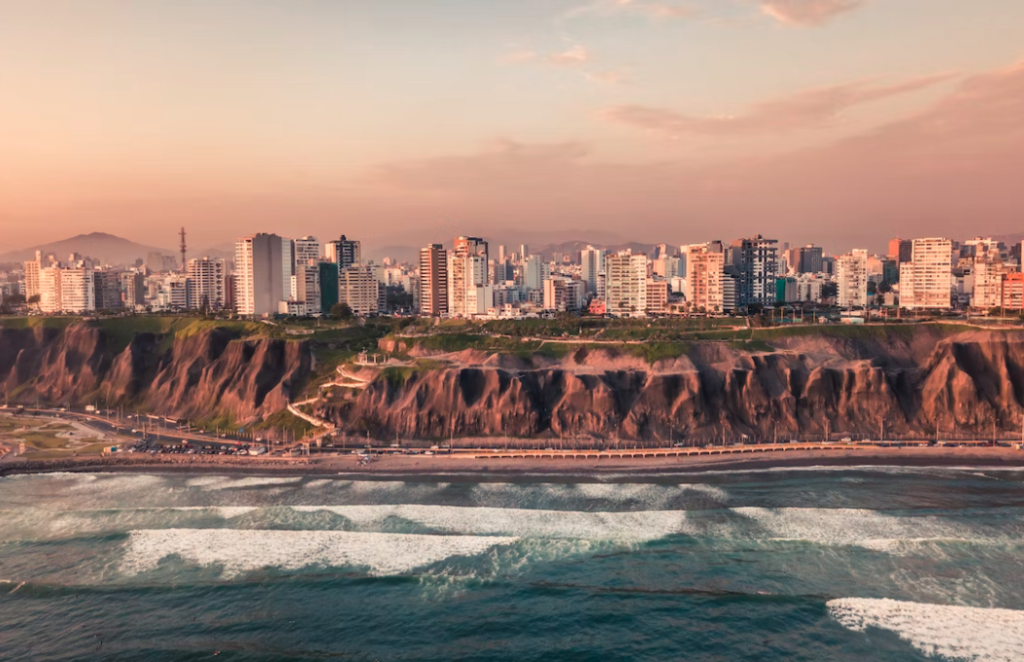- Digital nomadism is fast becoming a global megatrend with thousands of people working and traveling from a range of towns, cities and villages around the globe.
- Some countries and cities are incentivizing remote workers and nomads to move there, and are even making it legally easier to work there by introducing digital nomad visas.
- According to NomadList, the fastest growing remote work hubs of 2022 include Buenos Aires, Bangkok, and Lima.
Digital nomadism is fast becoming a global megatrend with thousands of people working and traveling from a range of towns, cities and villages around the globe.
But you may be wondering — where do digital nomads go? Are there digital nomad hotspots or hubs around the world where they might congregate?
Over the years there are some definite trends happening, with nomads flocking to certain locations. But recently that’s also been changing with some cities now establishing themselves as the fastest growing remote work hubs of 2022.
Another factor to consider when trying to figure out the most popular towns and cities for digital nomads and remote workers is to look at the countries and cities that are incentivizing remote workers and nomads to move there, and the places that are making it legally easier to work there by introducing digital nomad visas.
NomadList compiles a report annually that details where digital nomads are going. Below we look at their findings for 2022 in terms of the fastest growing remote hubs, and some of the already established ones.
Fastest growing pre-established remote work hubs
According to NomadList, these are the fastest growing remote work hubs of 2022 that are already quite well established:
- Belgrade (Serbia)
- Medellin (Colombia)
- Playa del Carmen (México)
- Lisbon (Portugal)
- Mexico City (Mexico)
- Porto (Portugal)
- Canggu (Thailand)
- Valencia (Spain)
- Munich (Germany)
- Toronto (Canada)

Most popular digital remote work destinations: the cities and countries offering digital nomad visas and financial incentives
Where digital nomads decide to go is an ever changing phenomenon. There are many factors that shape which places are most popular among digital nomads — such as political stability, affordability, and infrastructure and connectivity.
But there are also other factors that contribute towards making those places attractive to digital nomads and remote workers. This includes whether the countries have established digital nomad visas or visas that allow remote workers to legally live and work there.
Many towns and cities around the world are actively creating incentives and programs to attract remote workers to relocate and work there.
Countries that have established digital nomad visas (or the equivalent):
Some of the countries offering digital nomad visas, or long-term visas for remote workers, include Portugal (which offers a Portugal Passive Income Visa or D7 Visa and which also launched the first digital nomad village in Madeira); Estonia (which offers e-residency); Costa Rica; Argentina; Bermuda (via a Work From Bermuda Certificate); Germany; Greece; Romania; Mauritius; Barbados; Cayman Islands; Dubai; Iceland; Malta; Italy; Panama; Brazil; Thailand (via an Elite Visa); and Croatia.
Countries that are planning to launch digital nomad visas:
And several more countries are expected to launch their digital nomad visas imminently, including Spain, South Africa, Sri Lanka, Latvia, and Cabo Verde.

Cities and towns that have created incentive programs for remote workers:
There are also many cities and towns around the world that have established programs to try and attract remote workers to relocate there. This has the benefit to these areas by boosting local economies and generating employment opportunities.
Many of these places offer generous financial incentives like relocation grants. Some of these include Albinen (Switzerland), Tulsa (Oklahoma, U.S.), Topeka (Kansas, U.S.), Montpelier (Vermont, U.S.), Candela (Italy) and Sambuca di Sicilia (Italy). And there are also some Italian towns offering very affordable rents that include coworking and food in order to attract nomads to their areas.
Final thoughts on the most popular remote working destinations of 2022
Whether you’re considering becoming a digital nomad or you’ve been living the nomad lifestyle, you’re probably keen to find a community of like minded people. That’s probably why remote work and digital nomad hubs have become so popular — plus they are a great way of finding the right facilities and networking opportunities to run a business from.
There are many popular digital nomad destinations around the world, with many new and emerging cities joining the ranks. It will be exciting to see what will be on the list of emerging digital nomad destinations for 2023 and beyond.
Fastest growing remote work hubs in 2022
According to NomadList, these are the fastest growing remote work hubs of 2022:

Buenos Aires (Argentina)
This large capital city in South America is attracting scores of digital nomads. Not only does Argentina offer a digital nomad visa which makes it easier to work there remotely, but Buenos Aires is also ranked as one of the most affordable cities, has good weather, a great nightlife, and it has an abundance of coworking and coliving options.
Quick facts about Buenos Aires:
- Population: approx. 15 million
- Digital nomad visa: Yes
- Abundant coworking and coliving space options: Yes
- Internet speed: Slow
- Affordability: Very affordable

Ko Pha Ngan (Thailand)
Perhaps it’s the idyllic white sandy beaches and tropical-paradise-style vistas that make Ko Pha Ngan so appealing to digital nomads. Or, perhaps it’s the famed Full Moon Party, the great weather, coral blue seas and dive sites, or the great value for money of the accommodation on this island.
With a tiny population of around 12,000 people, this rural destination definitely has a reputation of being a hot-spot for nomads and remote workers. There are some incredible coworking and coliving space options and good internet.
Quick facts about Ko Pha Ngan:
- Population: approx. 12,000
- Digital nomad visa: Yes
- Abundant coworking and coliving space options: Yes
- Internet speed: Good
- Affordability: Very affordable

Bangkok (Thailand)
Thailand’s capital city, Bangkok, is a bustling and vibrant metropolis with many shrines, waterways and interesting architecture.
In this big city there are endless entertainment options, including many restaurants and a good nightlife. Plus, there are lots of cafes and coworking spaces to work from and it’s an affordable city to live in.
However, the pollution levels, traffic and heat can be uncomfortable for some people.
Quick facts about Bangkok:
- Population: approx. 9 million
- Digital nomad visa: Yes
- Abundant coworking and coliving space options: Yes
- Internet speed: Good
- Affordability: Good

Phuket (Thailand)
Phuket is a world-famous island that is known for its picturesque beaches, incredible cuisine, amazing nightlife, and range of outdoor adventure activities.
Surrounded by rainforests, mountains, beaches and the Andaman Sea, Phuket is home to many hotels, resorts, spas, bars and restaurants. A large number of digital nomads go to Phuket because of these attractions, plus the networking opportunities with other nomads and travelers, as well as its affordability and range of great coworking and coliving options.
Quick facts about Phuket:
- Population: approx. 420,000
- Digital nomad visa: Yes
- Abundant coworking and coliving space options: Yes
- Internet speed: Good
- Affordability: Good

Canggu (Thailand)
This coastal Balinese village, surrounded by beaches and rice paddies, is also known for having great surfing and is not far from the popular areas of Seminyak and Kuta.
Canggu has a laid back atmosphere and is a hotspot for nomads and remote workers who enjoy yoga, travel and meeting other entrepreneurs.
Quick facts about Canggu:
- Population: approx. 40,000
- Digital nomad visa: Yes
- Abundant coworking and coliving space options: Yes
- Internet speed: Good
- Affordability: Good

Koh Samui (Thailand)
This is the second largest island in Thailand, and is known for having great beaches, groves of coconut palms, mountains, rainforests and many upmarket hotels and resorts. It offers a range of activities like diving, swimming, snorkeling and jungle expeditions — and is popular with backpackers as well as people interested in luxury travel.
It’s an easily accessible island and has many expats and digital nomads living here, due to its great quality of life, affordability, good connectivity and many coworking options.
Quick facts about Koh Samui:
- Population: approx. 67,000
- Digital nomad visa: Yes
- Abundant coworking and coliving space options: Yes
- Internet speed: Good
- Affordability: Good

Lima (Peru)
As Peru’s capital city, Lima is one of the biggest cities in South America. It’s located on the shores of the Pacific Ocean and is known for its good weather, friendly people, outstanding gastronomy and a range of outdoor activities.
Digital nomad life in Lima, Peru, is becoming increasingly sought after. That’s probably due to its affordability compared with other large cities, its relative safety (especially for solo travelers) and its great coworking spaces.
However, compared to international averages, the internet speeds in Lima are not great (but they are good for the region). Peru doesn’t have a formal digital nomad visa as of yet, although the tourist visa typically allows you entry for 183 days.
Quick facts about Lima:
- Population: approx. 11 million people
- Digital nomad visa: No
- Abundant coworking and coliving space options: Yes
- Internet speed: Slow
- Affordability: Good

Bogotá (Colombia)
Bogotá is a thriving and energetic capital city, filled with great architectural landmarks and offers a wide range of cultural and entertainment activities. It’s also very affordable and offers many facilities for digital nomads together with local small businesses and entrepreneurs.
Although Colombia doesn’t have a digital nomad visa right now, there are plans underway to launch one soon.
There may be some detractions to living here: Bogotá also ranks low in terms of crime and safety and has moderate internet speed, plus it is located at a very high altitude which can affect some travelers.
Quick facts about Bogotá:
- Population: approx. 7 million people
- Digital nomad visa: No
- Abundant coworking and coliving space options: Yes
- Internet speed: Slow
- Affordability: Good

Chiang Mai (Thailand)
This city in northern Thailand, surrounded by mountains and nature, boasts hundreds of Buddhist temples and cultural landmarks. It’s long been a hotspot for digital nomads in Thailand and has great facilities and fast internet. Plus it’s very affordable, although it can get very humid and English isn’t widely spoken here.
Quick facts about Chiang Mai:
- Population: approx. 127,000
- Digital nomad visa: Yes
- Abundant coworking and coliving space options: Yes
- Internet speed: Good
- Affordability: Good

Edinburgh (Scotland, U.K.)
The only European city to make it onto NomadList’s 2022 fastest growing remote work hubs, Edinburgh is Scotland’s capital city and is a small but vibrant city in the north of the U.K.
Compared with other cities in the U.K., it’s much more affordable — plus it offers fast internet speeds, excellent public transport, is much safer than other European cities. Edinburgh also has great coworking facilities and has cheaper accommodations than many other places in the U.K.
However, Edinburgh is still much more expensive to live in compared with many other cities on this list, and it can get bitterly cold during the winter months.
Quick facts about Edinburgh
- Population: approx. 527,000
- Digital nomad visa: No
- Abundant coworking and coliving space options: Yes
- Internet speed: Good
- Affordability: Expensive


 Dr. Gleb Tsipursky – The Office Whisperer
Dr. Gleb Tsipursky – The Office Whisperer Nirit Cohen – WorkFutures
Nirit Cohen – WorkFutures Angela Howard – Culture Expert
Angela Howard – Culture Expert Drew Jones – Design & Innovation
Drew Jones – Design & Innovation Jonathan Price – CRE & Flex Expert
Jonathan Price – CRE & Flex Expert













